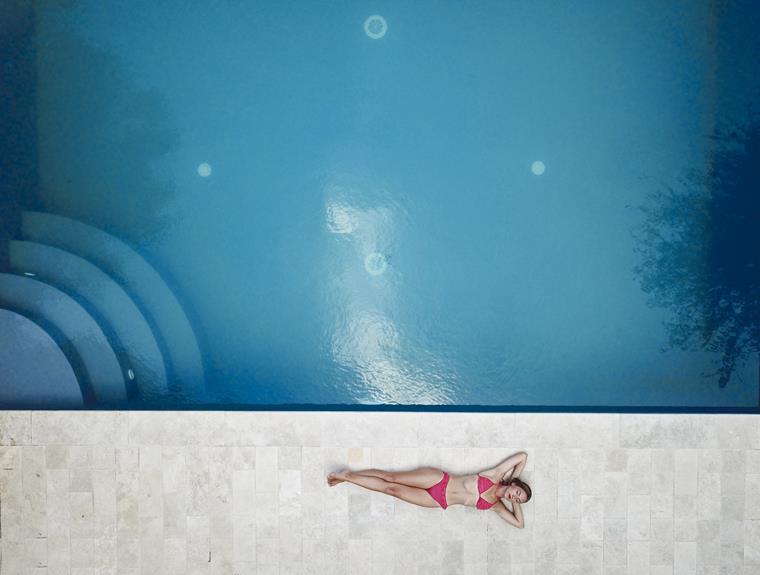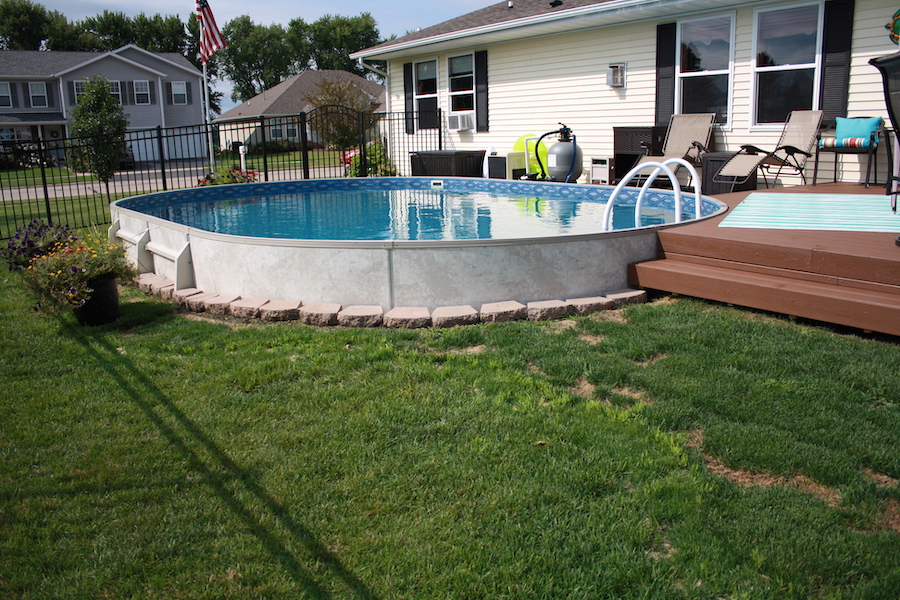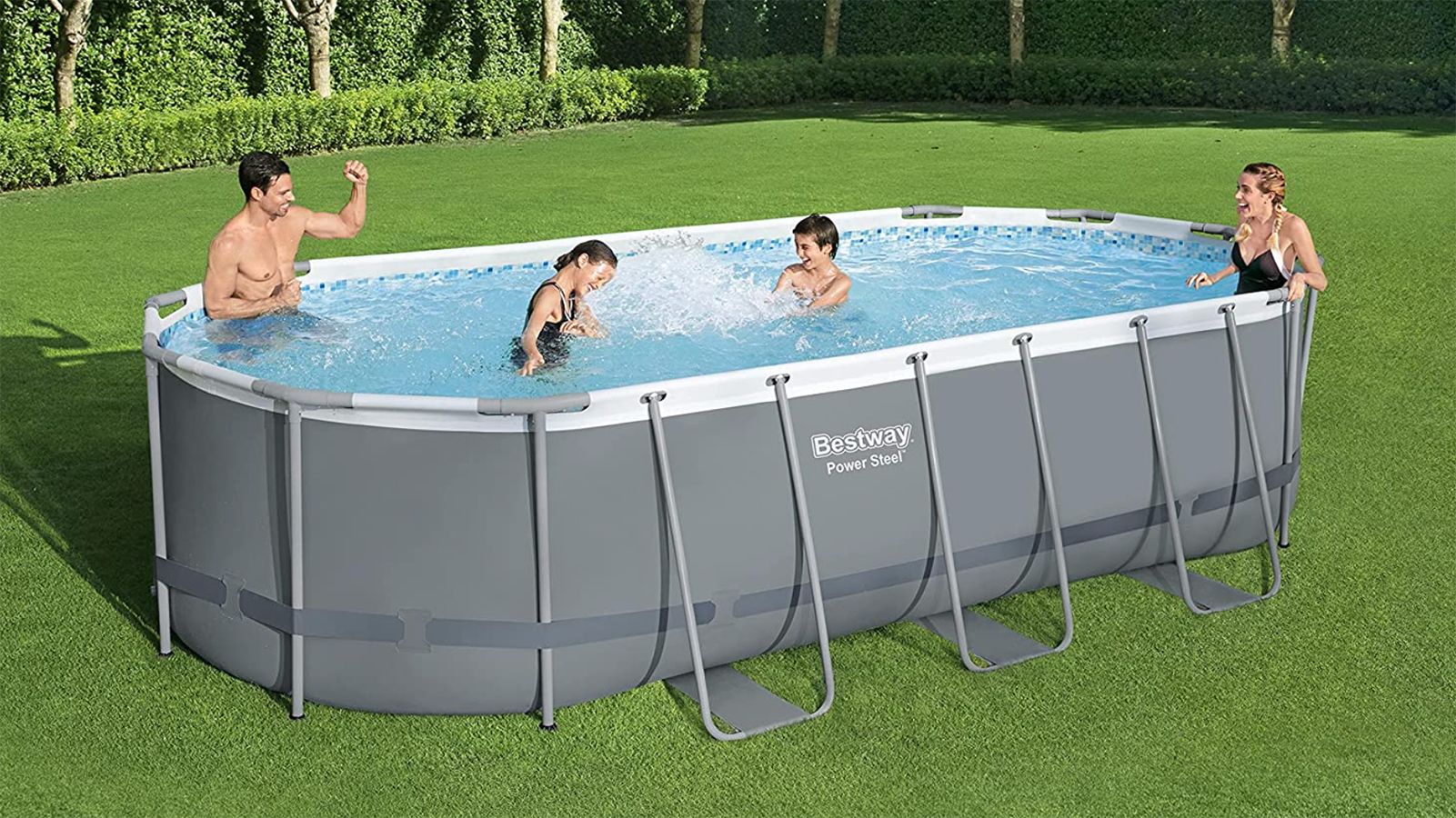Dive into the mesmerizing world of pool water colors and unlock their hidden meanings and influences. From the tranquil light blue to the sleek gray, each color is a canvas that reflects your pool’s ambiance. Discover the secrets behind achieving these colors using materials like plaster, tile, pebble, and quartz. Explore how factors such as light, foliage, algae, and mineral levels can transform your pool water. Get practical tips on maintaining clarity and preserving your desired color. Immerse yourself in this article and uncover the captivating world of pool water colors.
Key Takeaways
- The base color of a swimming pool is determined by the finish, such as plaster, tile, pebble, or quartz.
- Different water colors can be achieved by using various materials and pigments, such as white, blue, green, turquoise, gray, or black.
- Factors like light, trees, foliage, pool depth, algae, calcium levels, and metals can affect the pool water color.
- To maintain pool water clarity and color, regular cleaning, filtration, circulation, and the use of pool covers are essential.
The Significance of Light Blue Water Color
Choosing a white finish for your pool will give it a light blue water color. This pool water color is highly desirable as it creates a visually appealing and inviting environment. The light blue hue is achieved through the use of white cement, aggregates, blue pigments, or azure glass tiling. It provides a sense of tranquility and relaxation, making your pool a perfect oasis for unwinding and enjoying the outdoors. In terms of pool water clarity, light blue water color can help mask any minor imperfections or debris in the water, giving the illusion of a cleaner and clearer pool. However, it is important to note that maintaining pool water clarity is still essential, regardless of the water color. Regular skimming, vacuuming, and proper filtration and circulation are necessary to ensure a clean and sparkling pool.
Understanding the Meaning of Blue Water Color
When you see a vibrant blue water color in your pool, it creates a visually appealing and consistent look. Understanding the meaning of blue water color is essential for maintaining the clarity and aesthetics of your pool. Blue water color is typically achieved through the use of white cement, aggregates, blue pigments, or azure glass tiling. However, it is important to note that pool water discoloration can occur due to various factors such as algae growth, high calcium levels, or excess metals in the water. To ensure the desired blue water color, regular pool water testing and proper pool water chemistry maintenance are crucial. By monitoring and adjusting the chemical levels, you can prevent discoloration and keep your pool water consistently blue and visually pleasing.
Exploring the Implications of Green Water Color
If your pool has a green water color, it may indicate the presence of algae or excess metals in the water. Green water is a common pool water problem that can affect the overall quality and appearance of your pool. Algae growth can occur due to poor water circulation, inadequate sanitizer levels, or improper pool maintenance. To treat green water, it is important to shock the pool with a high dose of chlorine and use algaecides to eliminate the algae. In some cases, excess metals like copper or iron can cause the water to turn green. To address this issue, you may need to use a metal sequestrant or install a metal remover in your pool’s filtration system. By resolving these pool water problems and maintaining proper pool water quality, you can enjoy a clean and clear pool. Now, let’s unravel the secrets of turquoise water color.
Unraveling the Secrets of Turquoise Water Color
To unravel the secrets of turquoise water color, you must understand the combination of earthy and sandy shades, such as beige, that create this visually appealing aesthetic. Turquoise water color is achieved by incorporating these specific tones into the pool finish, whether it be plaster, tile, pebble, or quartz. The result is a vibrant and captivating pool color that adds a touch of elegance to any outdoor space.
Achieving Turquoise Water
Achieving a turquoise water color in your pool can be accomplished by using earthy and sandy shades, such as beige, for the finish. The base color of your swimming pool water is determined by the choice of finish, which can be plaster, tile, pebble, or quartz. To achieve a turquoise water color, opt for a beige finish that will impart a natural and serene appearance to your pool. The use of earthy and sandy shades creates a visually appealing aesthetic that mimics the color of tropical beaches. The turquoise water color adds a touch of elegance and tranquility to your pool, making it a beautiful and inviting space for relaxation and enjoyment. Transitioning into the subsequent section about the aesthetics of turquoise, the color of your pool water greatly influences the overall atmosphere and ambiance of your outdoor space.
Aesthetics of Turquoise
When it comes to the aesthetics of turquoise water in your pool, you can expect a visually appealing and inviting atmosphere. The earthy and sandy shades of turquoise create a serene and calming ambience, reminiscent of tropical beaches. The color exudes a sense of tranquility and relaxation, making it a popular choice for pool owners who want to create a peaceful oasis in their backyard. Turquoise water can enhance the natural beauty of your surroundings, blending seamlessly with lush greenery and creating a harmonious visual composition. The vibrant yet soothing hue of turquoise adds an element of elegance and sophistication to your pool, making it a standout feature in your outdoor space. Whether you’re looking to create a serene retreat or a stylish entertainment area, the aesthetics of turquoise water will undoubtedly elevate the overall ambiance of your pool.
Lighting and Turquoise Color
If you want to enhance the beauty of turquoise water in your pool, consider incorporating different lighting options. Here are three ways lighting can transform the appearance of your pool:
- Underwater LED Lights: These lights can be installed in your pool to create a stunning visual effect. The vibrant turquoise water will be illuminated from below, creating a mesmerizing glow.
- Fiber Optic Lighting: This type of lighting system uses small, flexible cables that emit light. By placing these cables strategically around your pool, you can create a magical ambiance with turquoise hues dancing across the water’s surface.
- Color-Changing Lights: With the use of advanced technology, you can install color-changing lights in your pool. These lights can be programmed to cycle through various colors, including shades of turquoise. This dynamic lighting option will add an element of excitement and elegance to your pool.
Decoding the Mystery of Gray Water Color
Gray water color in your pool can be achieved by using dark gray or brown finishes, creating a modern and sleek look. This color choice is perfect for those who desire a contemporary aesthetic for their pool. Dark gray finishes provide a sophisticated and stylish appearance, while brown finishes add warmth and depth to the water. The choice of finish greatly impacts the overall atmosphere of the pool, contributing to its overall appeal. It is important to carefully select the shade of gray or brown to achieve the desired effect. Additionally, maintaining the clarity and cleanliness of the pool is crucial to ensure that the gray water color remains clear and vibrant. Regular maintenance, including skimming, vacuuming, and proper filtration, will help to maintain the desired gray water color in your pool.
The Allure of Black and Dark Blue Water Color
Achieving a black or very dark blue water color can create a unique and sophisticated look for your pool by using black quartz or dark pebble finishes. Here are three reasons why this choice can be appealing:
- **Elegance**: The deep, dark color of the water exudes an air of elegance and luxury. It creates a captivating visual appeal that is sure to impress your guests and make your pool stand out.
- **Contrast**: The black or dark blue water color provides a striking contrast against the surrounding pool deck and landscaping. This contrast adds depth and dimension to your pool area, enhancing its overall aesthetic appeal.
- **Serene Ambiance**: The darker water color creates a serene and calming ambiance. It can evoke a sense of relaxation and tranquility, making your pool the perfect oasis for unwinding after a long day.
Factors Influencing Pool Water Color
Several factors influence the color of pool water. Lighting and reflection play a significant role in how the water appears. Natural elements, such as trees and foliage, can affect the scattering of light in the pool. Additionally, the presence of algae and the quality of the water can also impact its color.
Lighting and Reflection
The amount and quality of light in your pool area has a significant impact on the water color and reflection. Proper lighting can enhance the beauty of your pool and create a desired ambiance. Here are three key factors to consider:
- Lighting intensity: Optimal lighting intensity can bring out the true colors of your pool water, making it appear vibrant and inviting. Brighter lights can create a lively atmosphere, while softer lights can create a more relaxed and tranquil setting.
- Lighting placement: The strategic placement of lights around your pool can highlight specific areas and features, such as waterfalls or decorative tiles. This can add depth and dimension to your pool, creating a visually stunning effect.
- Lighting color: The color of your pool lights can dramatically change the water color. White lights can give a crisp and clean appearance, while colored lights can create a more dramatic and playful effect.
Consider these factors when selecting and positioning your pool lights to achieve the desired water color and reflection. Now, let’s explore the natural and artificial influences on pool water color.
Natural and Artificial Influences
Natural and artificial influences can significantly affect the color of your pool water. Natural factors such as trees and foliage surrounding the pool can impact how light scatters in the water, creating different hues and tones. The depth of the pool also plays a role in how light interacts with the water, resulting in variations in color. Additionally, the presence of algae can cause the water to turn greenish and murky.
Artificial factors, such as pool lights, can also influence the water color. By using different lighting techniques, you can enhance or alter the appearance of the water. For example, underwater LED lights can create a mesmerizing effect, showcasing the pool in various colors.
It is important to consider these natural and artificial influences when choosing the desired water color for your pool. By understanding how these factors affect the water, you can create a visually appealing and aesthetically pleasing environment for your swimming experience.
Algae and Water Quality
To maintain a healthy and clear pool, it’s important to regularly test the water for algae and ensure proper chemical balance. Algae can quickly multiply and cause water quality issues, affecting the overall appearance and safety of your pool. Here are three crucial steps to take:
- Test the water regularly: Use test strips or a testing kit to measure the levels of chlorine, pH, and alkalinity in the water. This will help you identify any imbalances and take appropriate action.
- Treat algae promptly: If you detect algae growth, it’s essential to address it immediately. Use an algaecide or shock treatment specifically designed for your pool type. Follow the instructions carefully to effectively eliminate the algae and restore water clarity.
- Maintain proper circulation and filtration: Ensure that your pool’s filtration system is functioning correctly and clean or backwash the filter regularly. Proper circulation will help prevent algae growth and maintain water quality.
Tips for Maintaining Pool Water Clarity and Color
Regularly skimming the pool to remove debris and vacuuming the pool floor are important tasks for maintaining the clarity and color of your pool water. By removing debris and dirt from the pool, you can prevent them from settling on the pool floor and affecting the water color. In addition to these tasks, it is crucial to clean and maintain proper filtration and circulation. Using a pool cover can also help to block debris and maintain water clarity. Encouraging swimmers to rinse off sunscreen before entering the pool can reduce the introduction of chemicals that may affect the water color. By following these steps, you can ensure that your pool water remains clear and retains its desired color.
| Task | Importance |
|---|---|
| Regularly skimming the pool | High |
| Vacuuming the pool floor | High |
| Cleaning and maintaining | Medium |
| Using a pool cover | Medium |
| Encouraging rinsing off | Low |
Frequently Asked Questions
Can the Color of the Pool Water Change Throughout the Day?
Yes, the color of the pool water can change throughout the day. This change is primarily influenced by the lighting conditions. As the sun moves across the sky, the angle and intensity of the light can alter the appearance of the water color. Shadows from trees and foliage can also affect how light scatters in the pool, further contributing to the variation in water color. It’s important to note that pool lights can also have an impact on the water color at night.
How Do Pool Lights Affect the Color of the Water?
Pool lights have a mesmerizing effect on your pool water. They illuminate the water, transforming it into a breathtaking display of vibrant colors. These lights can change the color of the water, creating an enchanting ambiance that enhances your swimming experience. By selecting different light colors, you can customize the mood and atmosphere of your pool. Whether you want a calming blue or a dramatic red, pool lights have the power to make your pool water come alive with brilliant hues.
Is It More Difficult to Detect Algae in a Pool With a Green Water Color?
Yes, it is more difficult to detect algae in a pool with a green water color. Algae can thrive in green-tinted water, making it harder to spot. The green color camouflages the algae, making it blend in with the water. This makes it challenging to identify and remove the algae promptly. Regular monitoring and maintenance are essential to ensure the pool remains clean and free from algae growth.
Do Different Types of Algae Result in Different Water Colors?
Different types of algae can indeed result in different water colors. For example, if your pool has a green water color, it could be a sign of green algae. Reddish or brownish water might indicate the presence of red or brown algae, respectively. Additionally, yellow or black water can be caused by different types of algae. It’s important to accurately identify the type of algae in order to effectively treat and eliminate it from your pool.
Is It Necessary to Clean the Pool Even if the Water Color Is Discreet?
Yes, it is necessary to clean the pool even if the water color is discreet. Cleaning the pool ensures that debris, dirt, and bacteria are removed, maintaining water clarity and preventing potential health risks. Regular skimming, vacuuming, and proper filtration and circulation are essential to keep the pool clean and safe for swimming. Despite the discreet color, algae can still be present, and cleaning is necessary to prevent its growth and maintain a healthy pool environment.
Conclusion
As you dive into the world of pool water colors, you’ll discover that each hue carries its own symbolic meaning. From the calming light blue to the mysterious gray, these colors can evoke emotions and set the ambiance of your pool area. By understanding the factors that influence pool water color and following practical tips for maintenance, you can create a pool oasis that not only looks stunning but also evokes the desired emotional response in those who enjoy it.







